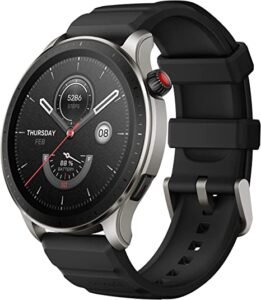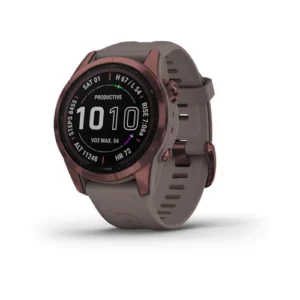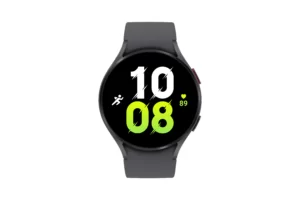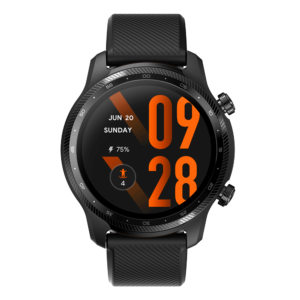Top 10 Best Fitness Trackers For 2023
Since the days of basic bands that did little more than measure steps, fitness trackers have advanced significantly. Modern trackers can keep track of your heart health as well as how quickly you recover from a strenuous exercise session. They have a ton of sensors and, in some situations, can compete favorably with smartwatches. Whatever your fitness objectives are, a fitness tracker might certainly help you meet them.
Wearables are highly personal compared to some other technology, so before pulling out your money, there are a few extra factors you should think about.
(However, Black Friday and Cyber Monday sales undoubtedly lessen the blow.) It is challenging to determine which fitness tracker is suitable for everyone in light of this.
Top 10 Best Fitness Trackers For 2023
Amazfit Bip S

The $69.99 Amazfit Bip S is a great option if you want to save a little money. Although it isn’t the most visually appealing tracker available, it comes with several capabilities you wouldn’t anticipate on a tracker under $100. For instance, it includes a built-in GPS, detailed sleep tracking, ongoing heart rate monitoring, an always-on display, and a battery life of around two weeks. Although it obviously functions more like a fitness tracker than a smartwatch, you can customise the watch face, notifications, and music settings. At this pricing point, that’s impressive.
Although it won’t win any beauty contests, the Bip S tested as accurately as more expensive watches. This is a respectable substitute if you’ve been missing Pebble’s straightforward and affordable smartwatches.
Amazfit GTR 4

The Amazfit GTR 4 packs a powerful punch for its size. It costs only $199 and offers a wide range of capabilities typically found on wearables that cost much more. This consists of a vivid OLED screen, blood oxygen monitoring, tracking of sleep stages, tracking of stress, compatibility with Amazon Alexa, and an offline digital assistant. Additionally, it has an integrated Pomodoro timer and a native camera remote. The GTR 4 also boasts multiband GPS for more precise GPS tracking in difficult conditions, which is great for outdoor exercise aficionados. Even GPX routes from Strava and Komoot can be imported. In order to determine whether you’re getting the prescribed 150 minutes of moderate exercise each week, the GTR 4 uses a more comprehensive approach to health, exchanging steps for PAI points.
The GTR 4 offers all the essential smart functions, including push notifications, rapid text replies on Android, alarms, timers, and Bluetooth call making and receiving. The GTR 4’s extensive feature set and long battery life more than make up for the one glaring shortcoming, which is contactless payments. With moderate use, it lasts for 10–14 days on a single charge, and with heavy use, it lasts for nearly a week. Although it might not have the same name recognition as a Fitbit, you might want to overlook that given that Google nerfed both the Versa 4 and Sense 2 this year. Furthermore, unlike either of those watches, the GTR 4 doesn’t feature thick bezels. The OLED display has sharp watchfaces and fluid animations.
Oura Ring Gen 3

The $299 Oura Ring isn’t worn on the wrist like the vast majority of fitness trackers. For those who want something a bit more covert, the smart ring is a nice alternative. Due to its absence of a screen and refusal to send push messages, it is also less obtrusive than some other wrist-based solutions.
The Oura Ring measures a tonne of information, including heart rate variability and body temperature, despite being smaller than the normal wearable.The device’s third generation additionally adds SpO2 sensors, period forecasts, and continuous heart rate monitoring.Future upgrades will include include blood oxygen levels and exercise monitoring (currently, activities must be imported.
The Oura Ring also allows you to keep track of your guided meditation sessions if you need some stress relief.
The Oura Ring monitors common metrics like steps taken and calories burnt, but its primary emphasis is on sleep and recuperation. Three sets of ratings for your preparedness, sleep, and activity are presented to you each day. It’s an excellent choice if you want a more hands-off experience with your data because it offers a straightforward, comprehensive view of your entire heath.
Apple Watch Series 8

iPhone customers need go no farther than the $399 Apple Watch Series 8 if they’re searching for a wearable that does fitness well. (The LTE model is $50 more expensive.) Overall design hasn’t altered much; the Series 8 is still available in 41mm and 45mm diameters.
The Series 8 is now a lot more comprehensive fitness and health tracker than it was before this year’s update. Advanced running metrics and the option to design your own custom workouts have been added by Apple with watchOS 9. The watch contains two temperature sensors as well as crash detection in case you ever have an accident and sophisticated cycle tracking. Along with better heart rate monitoring, EKGs, SpO2 monitoring, and sleep tracking, this is on top of other well-known health features. Additionally, the Series 8 offers a useful medicine reminders app if you struggle to remember to take your pills.
Another option for first-time buyers is the second-generation Apple Watch SE. Even though you don’t get as many features and it’s somewhat less expensive at $279, it’s a fantastic introduction to the ecosystem.
Fitbit Charge 5

One of the most cutting-edge fitness trackers available is the Fitbit Charge 5, which retails for $179.99. The addition of a brilliant OLED display, an electrodermal activity sensor, and EKGs makes it one of the lineup’s more substantial enhancements in a while. Additionally, it enables intelligent functions like timers, alerts, and contactless payments. It contains integrated GPS, continuous heart rate monitoring, sleep tracking, and SpO2 sensors for health monitoring.
Is there a more thrilling tracker than the Charge 5? No. However, it is reasonably priced and performs the job effectively. The one thing that makes us less than thrilled is how much battery life is lost when the always-on display is enabled. While the Charge 5’s battery life is predicted to last seven days, it really lasts just two to three days when the AOD is turned on.
Garmin Vivomove Sport

While Garmin has previously produced some genuinely wonderful hybrid trackers, their high cost made them difficult to recommend. The Vivomove Sport, on the other hand, finally gets it right. Because of the concealed OLED display, it seems to be an analogue Swatch, but accuracy is unaffected.
You give up certain features, including as built-in GPS and NFC payments, for $179.99. You do, however, get access to the full Garmin fitness monitoring platform and push alerts. There are certain trackers that are more reminiscent of jewellery, such as the Fitbit Luxe or Bellabeat’s collection, but the Vivosport Move’s design is far more durable for active lives.
Garmin Fenix 7S/7/7X

The premium Fenix 7 series from Garmin is no joke. It has an integrated multi-band GPS, a battery that lasts for weeks, the choice of touchscreen or button navigation, topographical maps, and tonnes and tonnes of data. Another useful addition is a real-time stamina tool that tells you how much energy you still have.
You might also get a solar charger and an integrated LED flashlight, depending on the model you choose. The Fenix is a typical example of how comprehensive, in-depth metrics are provided by Garmin wearables. You also receive beneficial training manuals and coaching programmes in addition to outstanding recuperation metrics. That Garmin doesn’t charge extra for such functions is the finest part. The Fenix 7 series starts at $699.99, so that’s wonderful news.
We like how swiftly the Fenix 7 watches can detect a GPS signal. If you’re training in the dead of winter, you must do it. These timepieces are also resistant to damage. All variants have up to 10 ATM of water resistance and are constructed to military-grade specifications. They may therefore easily submerge themselves in the ocean. Another benefit is the Fenix 7 series’ beautiful colour options, which make it less ugly than some other robust fitness watches. That is beneficial for those who might desire a watch that can serve as a daily driver.
The OLED on the Garmin Epix 2 is much easier on the eyes, so we can’t say that the transflective screen is our favourite. If battery life isn’t your top priority, the Epix 2 is also an excellent choice. If you don’t have large wrists, the Fenix 7 lineup’s range of size possibilities makes it a more adaptable choice. Even though it’s more expensive, it’s a great choice for those who spend a lot of time outside.
Whoop 4.0
Not for the casual enthusiast, the Whoop 4.0. It costs $30 a month to subscribe, and the information it offers is only helpful if you’re actively practising for a cardio-intensive sport. You should go elsewhere if strength training is your main type of exercise. This is a focus-free tracker that focuses on sleep and recuperation, similar to the Oura Ring. The primary distinction is that this has a more athletic bent. You’ll learn considerably more about the amount of stress you’ve been under during the last week, for example.
Additionally, Whoop offers a variety of creative ways to wear its tracker, such as in underwear and arm/knee sleeves.If you’re one of those unicorns who needs a secondary tracker to augment another type of fitness tracking, this makes it an interesting choice. Again, those that push themselves and aren’t afraid to try new things will get the most enjoyment out of this tracker.
Samsung Galaxy Watch 5

This is going to be the greatest fully-featured wristwatch for tracking your fitness if you own a Samsung phone. The Galaxy Watch’s health features have received more attention from Samsung than any other Wear OS 3 wristwatch currently on the market, in addition to being the only one. More enhancements have been made to the sleep tracking, and the $279.99 The 3-in-1 sensor from the Galaxy Watch 5 allows for body composition analysis. No other smartwatch at the time can do that exclusive feature. The production standards of the exercise videos in the Samsung Health app aren’t as high as those on Fitness Plus or Peloton, but you can still access them.
A temperature sensor is also added in the Watch 5.Although there aren’t any functions that now use it, it future-proofs the watch for when those features do.
With the switch to Wear OS 3, there are less growing pains this year (at least for Samsung). The Watch 5 supports Google Assistant, Google Pay, and YouTube Music. It’s hard to truly suggest this to Android users who don’t possess a Samsung device, though, because several functions are exclusive to Samsung owners. Battery life might be a little bit longer, but it is an upgrade over the Galaxy Watch 4. If battery life is your greatest priority, the $449.99 Galaxy Watch 5 Pro could be a better option.
Mobvoi TicWatch Pro 3 Ultra GPS

When it comes to a more smartwatch-like fitness monitoring experience for Android users who don’t own a Samsung device, the options are limited. However, if you’re set on taking this way, the Mobvoi TicWatch Pro 3 Ultra GPS, which costs $299.99, is your best option. The most recent Qualcomm Snapdragon Wear 4100 processor is provided. That’s significant since this watch is one of the handfuls that will reportedly receive the Wear OS 3 upgrade when it is released later this year.
Additionally, it includes features geared toward fitness that the Fossil Gen 6 just does not. That includes enhanced durability and thorough sleep monitoring. Atrial fibrillation, abnormal heartbeat, and stress tracking are also included.
